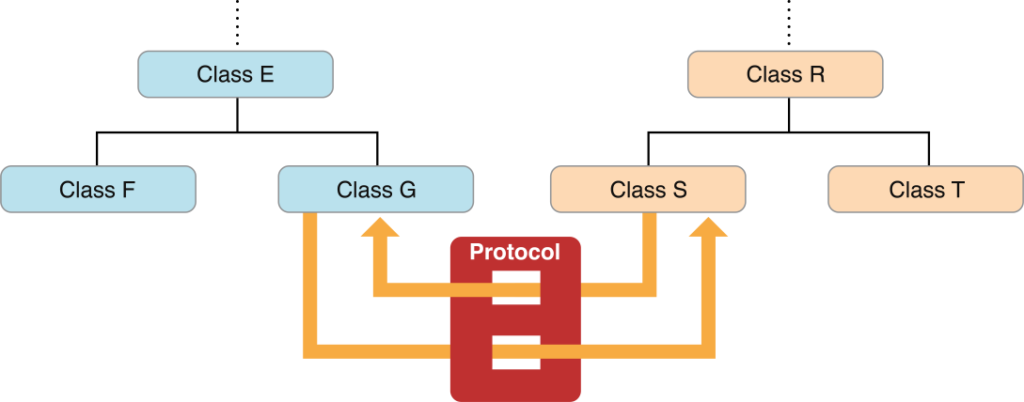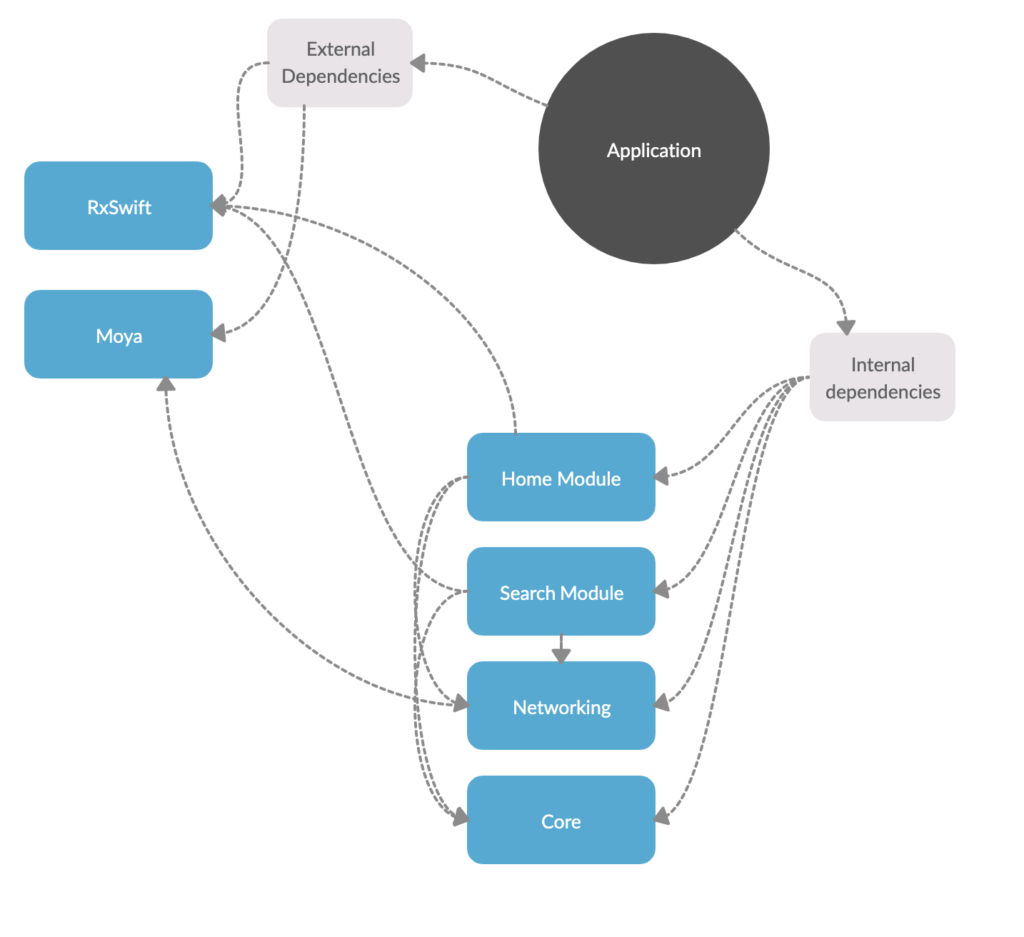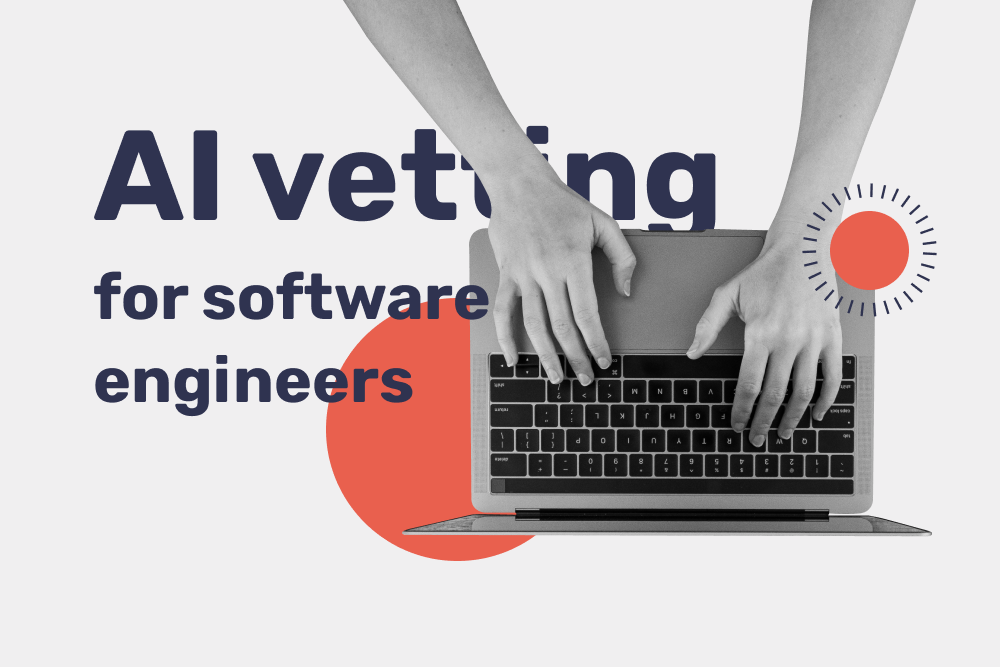iOS applications are a powerful way to stand out among competitors, raise brand awareness, and connect with users on a deeper, personal level. According to statistics, mobile users spend 50% of their device time using apps — that’s why investing in building a mobile product is reasonable.
On the other hand, statistically, over 30,000 new iOS apps are released each month. To break through the wall of competition, a business owner needs to hire skilled iOS developers.
In this post, we will take an in-depth look at ios interview questions you can ask a programming job candidate.
If you want to ask developers a few behavioral or logical questions, take a look at this post covering these types of software engineer interview questions.

20 Objective-C iOS Developer Interview Questions
Here are the technical questions you can ask to see if the candidate can deliver the quality of code that responds to the ios developer salary your company offers.
Question #1: Objective-C developers usually use protocols. Define a protocol
Answer: In Objective-C, a protocol is a way to declare an interface for a class. Thanks to protocols, developers can connect two distant classes to one another so that an application performs its functions.
Question #2. What types of protocols are there?
Answer: there are two types of protocols — formal and informal.

- Under an informal protocol, most objects become protocol adopters. By definition, an informal protocol is an NSObject category. When working with such a protocol, a developer doesn’t have to use methods. Before the release of Objective-C 2.0., developers needed to use informal protocols when working with AppKit and Foundation. After the release of 2.0, however, optional methods were introduced — meaning programmers no longer had to rely on informal protocols to implement delegation in AppKit and Foundation classes.
- A formal protocol constrains a client class to a specific range of methods. Formal protocols have their own syntax for type-checking, adoption, or declaration. There are optional methods for formal protocols as well — developers can call them using the keyword @optional. After a formal protocol is declared, all subclasses of an ancestor class will inherit the protocol as well.
Question #3. What’s the difference between Objective-C keywords #include and #import?
Answer: Typically, developers prefer #import over include. To understand the reason why, let’s take a look at the difference between the two:
- #import ensures that an attached file isn’t included in the preprocessor repeatedly.
- #include, on the other hand, supports adding the same file multiple types.
Avoiding recursive inclusion is one of the best practices of Objective-C development — that’s why #import is commonly used over #include.
Here, a candidate should be careful to not confuse Objective-C and C (in the latter, using #include is a more common practice).
Question #4. Define #import in Objective-C?
Answer: #Import is a keyword that prevents a file from being included in the application more than once.
Question #5. How are categories used in Objective-C?
Answer: In Objective-C, a category is used to add new methods to a class (with their help, for example, developers add methods to Cocoa frameworks). When a method is added using categories, all subclasses inherit this set of methods as well.
Let’s take a look at a few practical applications of a category:
- Separating source files by distributing class implementation.
- Sorting between methods in a large class.
- Declaring private methods.
Question #6. What are the pros and cons of using categories in Objective-C?
Answer: When using categories, developers need to be aware of their advantages and limitations. Let’s take a look at the benefits and drawbacks of Objective-C categories:
Advantages:
- Allows the extension of any class, even those with no source.
- A solid way to structure the code and improve its readability.
- Widely used to implement UI extensions.
Disadvantages: a category cannot in any way override the methods defined by a different category.
Question #7. Concisely explain the concept of fast enumeration.
Answer: by definition, fast enumeration facilitates the process of enumerating (mentioning the objects it includes one by one) a collection.
When working with fast enumeration, a developer sees an object as a collection (be it a set or an array). Fast enumeration assists developers in retrieving the elements held back by an instance. The NSFastEnumeration protocol is similar to the concept of loops in C.
| Question #8. What is the difference between NSMutableArray and NSArray? Which one should developers use? |
- NSArray creates static (immutable) arrays.
- NSMutableArray, on the other hand, creates dynamic (mutable) arrays.
Although being able to modify an array is convenient, it’s worth noting that NSMutableArray is slower than NSArray and is not thread safe.
Question #9. What is the objective of using @synthesize in Objective-C?
Answer: @synthesize is a keyword that defines a getter-setter for a chosen variable. Developers use it to add new attributes to variables and generate a getter and setter automatically.
Question #10. Explain the purpose of dot notation in Objective-C
Answer: developers use such a way of notation (ex. abc.length) as a readability shortcut when setting getters and setters for variables.
Essentially, abc.length is the same as abs.setLength= but is easier to read.
Question #11. How does a developer call a function in Objective-C?
Answer: To call a method, a programmer uses the following syntax:
| className methodName |
Question #12. What is the difference between atomic and non-atomic properties in Objective-C?
Answer: practically speaking, an atomic property is slower in execution than a non-atomic one.
This has to do with the fact that atomic properties (default) ensure that processes are completed fully.
Non-atomic properties, on the other hand, are faster since they don’t require the full completion of a process. Although it’s a faster type of behavior, since they are not thread-safe, not-atomic properties aren’t default.
Question #13. What do KVO and KVD stand for? Explain both concepts
Answer:
- KVC (short for Key-Value-Coding) is used when a developer wants to access a property with the help of a string.
- KVO (short for Key-Value-Observing) allows observing property or value changes. To be able to track changes, developers need to define a value as a string. Thus, to be eligible for observing, a value has to comply with Key Value Coding.
Question #14. Describe the meaning of GrandCentralDispatch
Answer: GCD is a way to queue and execute tasks both in a synchronous and asynchronous way. GrandCentralDispatch is a versatile tool developers can apply to most tasks without having to write threaded code.
Question #15. Describe blocks in Objective-C
Answer: blocks are a shared feature of C++, Objective-C, and C. It allows developers to create multiple code segments and attach them to functions or methods as separate values. It’s easy to define a block in a chunk of code — it needs to start with the caret (^) symbol.
Question #16. Define id
Answer: in Objective-C, id is used as a pointer to a data type. The difference between * and id is that id can only point to Objective-C objects while * doesn’t have such a restriction.
Question #17. Define responder chains
Answer: A few responder objects linked together form a responder chain. Such a chain starts with the first responder and terminates with an object. In case the first responder fails to handle an event, it’ll pass the action to the next responder in the series.
Question #18. Is there a difference between id and InstanceType?
Answer: yes, there is.
- Instancetype is a result-type keyword that’s used to return methods.
- Id, on the other hand, is a generic object.
Typically, developers prefer using instancetype when returning method results over id.
Question #19. Does Objective-C support function overloading?
Answer: at the moment, there’s no method overloading in Objective-C. That’s why developers have to name methods differently.
Question #20. Describe the concept of delegation.
Answer: in Objective-C, a delegate is an object that performs actions instead of a different object. Developers can either retain delegates or leave them the way they are. Creating too many retain cycles is not a recommended practice in Objective-C.
To hire Android developers, take a look at our full list of Android developer interview questions.
15 Swift iOS Developer Interview Questions For Software Developers
Here are a few basic and middle-level Swift interview questions you can ask or send over to a freelance ios developer.
Question #1. Define Swift and describe the language’s main advantages.
Answer: Swift is a general-purpose programming language, with multi-paradigm and compiled time properties. It used to create products for iOS, macOS, tvOS, watchOS, as well as Linux.
The main advantages of Swift are:
- Readable code thanks to concise, easy-to-read language syntax.
- Promoting safety — Swift makes unit testing and fixing errors when coding an easy and fast process.
- High maintainability — Swift code typically doesn’t leave behind much legacy.
- Open-source nature promotes innovation.
- High performance speed — since Swift relies on the LLVM compiler, all language code is transformed into the native format. Combined with a concise syntax, that feature allows Swift apps to be faster than their Objective-C counterparts.
Question #2. What is the difference between structures and classes in Swift?
Answer: the main differences between classes and structures are outlined in the table below.
| Difference | Class | Structure |
| Type casting | Offers type casting — developers can interpret class instances at runtime. | Doesn’t support type casting |
| Reference counting | Allows more than reference to an instance. | Doesn’t allow multiple instance references. |
| Inheritance | Supported | Not supported |
| Deinitializing | Allows instances to free up resources when enabled. | Is not supported. |
| Ways of instance passing | By reference | By value. |
Question #3. When should a developer use classes and structures?
Answer: there are situations that call for classes and cases in which it’s better to use a structure. Let’s examine them closer:
- Developers use structures to copy encapsulated values when the instance of the structure gets passed around.
- In case a developer wants to use inheritance, he should define a class. In fact, using classes over structures is a default Swift development practice.
Question #4. Describe modules in Swift.

Answer: by definition, a module is a unit in which Swift code gets distributed. In Swift, modules can implement frameworks or applications as well. Also, in Swift, Xcode built targets are seen as separate modules.
Question #5. How can a developer pass variables as references in Swift?
Answer: to transform a variable into a reference, programmers typically use inout. The parameter allows you to modify both the local variable and the parameters that are passed down to it.
To hire skilled iOS developers with affordable salaries abroad, contact Bridge Teams!
Question #6. Describe the types of access levels.
Answer: there are 5 types of access levels in Swift.
- Open access classes can become a part of a subclass. Another module can override such a class as well.
- Public access classes can be turned into a subclass or overridden only by a module that defines them.
- Internal access entities can only be used as a part of the source file of the module that defines them, not a different one.
- File-private access data has its use restricted only to the source file that defines it.
- Private access setting doesn’t allow using entities for enclosing declarations or declaration extensions.
Question #7. What is lazy initialization in Swift?
Answer: it’s a technique used to postpone the start of a resource-consuming process or object declaration. Developers can only apply lazy initialization to classes and structures. To prepare a property for initialization, a programmer needs to use the var keyword.
Also, a candidate should mention that lazy initialization is not a thread-safe property.
Question #8. Define a tuple.
Answer: a tuple is a series of values seen by the system as a single value. In Swift, tuples are typically used to return function calls with several values.
There are two types of tuples: named and unnamed (when the names of its included elements aren’t specified).
Question #9. Define optional in Swift and describe its use cases
Answer: by definition, an optional is a data type that can hold a value or stay empty. To append an optional to a data type, a developer adds “?” to the data type.
Typically, developers add an optional in two cases — in case their execution isn’t reliable and in case an optional is not needed now but might come in handy later.
Question #10. Describe optional chaining
Answer: the definition of optional chaining is the process of calling a subscript, a property, a method, as well as querying of an optional that might content a ‘nil’.
Depending on the value of an optional, the system return can either be a value or a nil.
Hire Experienced iOS Developers With Bridge Teams
If you struggle to find local talent skilled in iOS development or a good iOS developer is demanding higher paychecks, how about running a global office abroad. Hiring a team outside of your tech hub might seem overwhelming — that’s why team managers could use expert assistance.
Bridge Teams offers a new approach to opening global headquarters. Here’s how we help teams find skilled developers and manage their day-to-day work:
- Screen skilled candidates and run thorough job interviews. We assess both technical and behavioral skills of iOS programmers when hiring developers for senior, middle, and junior ios developer jobs.
- Provide business managers with a platform for tracking hiring, office expenses, and documentation.
- Offer end-to-end legal support, billing, and office management assistance.
- Find an affordable office and hardware for your remote team.
To find out how Bridge helps SME and large-scale business managers create feasible and productive development teams abroad and hire skilled programmers for ios developer jobs, leave us a message.



